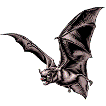Museum, University of Nebraska State

University of Nebraska State Museum: Mammalogy Papers
Document Type
Article
Date of this Version
12-1982
Citation
Prairie Naturalist (December 1982) 14(4): 125-127.
Abstract
Biologists studying food habits of predators can often determine the prey species but not the sex of the prey from remains found at dens, in stomachs, scats, or pellets of predators. Knowledge of the sex of prey is useful in evaluating predator food habits as well as indicating sex specific differences in prey behavior.
Plains pocket gophers, Geomys bursarius, can be easily identified by the presence of two prominent grooves on the face of each upper incisor. This makes them ideal specimens for studying prey remains. In this paper, we present data that can be used to identify the sex of plains pocket gophers from the width of their incisors.
Two subspecies of the plains pocket gopher occur in Nebraska (Jones 1964). Geomys b. lutescens occurs in the western two-thirds and G. b. majusculus occurs in the eastern third of the state. The latter is larger than the former and in each subspecies males are larger than females as indicated by total length Ganes 1964).
Included in
Biodiversity Commons, Other Physiology Commons, Zoology Commons


Comments
U.S. Government author.